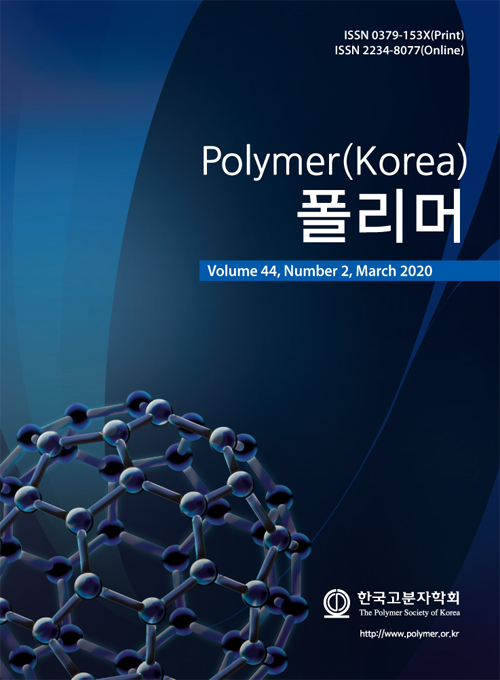Rice husk flour (RHF)
reinforced recycled polystyrene composites were prepared by a co-rotating twin
screw extruder and were injection molded to various specimens. Four levels of
RHF loading (30, 40, 50, and 60 wt%) were used. Thermal property of composites
was improved only over 485 oC that was due to the higher silica
content of RHF. Both tensile strength and elongation at break of composites
reached the maximum at the 30 wt% of RHF. Flexural strength showed the best
results with both 40 and 50 wt% RHF loadings. Tensile and flexural modulus of
composites increased with the increase of RHF content. Notched Izod impact
strength also increased with RHF addition up to 60 wt%. There was no
significant difference in the mechanical properties of composites reinforced
with RHFs less than 180 μm, 180~500 μm, 500~850 μm, and less than
850 μm, respectively. The density of composites increased linearly with
the addition of RHF. A better dispersion of RHF and the strong interaction
between RHF and polymer were confirmed by scanning electron microscopy images
왕겨분말 강화 재활용 폴리스티렌 복합재료를 동일방향 회전
이축 압출기로 제조하였고 다양한 시편으로 사출하였다. 네 가지의 왕겨분말 함량(30, 40, 50 및 60 wt%)이 사용되었다. 복합재료의 열적 물성은 왕겨분말의 높은 실리카 함량으로 인해 485 oC
이상에서만 향상되었다. 인장 강도 및 신율은 왕겨분말
30 wt%에서 최대값을 보였다. 굴곡강도는 왕겨분말 40 및 50 wt%에서 가장 좋은 결과를 보였다. 복합재료의 노치드 Izod 충격강도는 60 wt%까지 왕겨분말 첨가에 따라 증가하였다. 왕겨분말을 180 μm 이하, 180~500 μm, 500~850 μm 및
850 μm 이하를 사용하여 강화시킨 복합재료들의 기계적 물성에서 중요한 차이는
없었다. 복합재료의 밀도는 왕겨분말의 첨가에 따라 선형적으로 증가하였다. 왕겨분말의 우수한 분산과 왕겨분말과 고분자 사이의 강한 상호작용은 SEM 이미지에서
확인되었다
Keywords: recycled polystyrene, rice husk flour, mechanical properties, thermal properties, morphology
- Polymer(Korea) 폴리머
- Frequency : Bimonthly(odd)
ISSN 0379-153X(Print)
ISSN 2234-8077(Online)
Abbr. Polym. Korea - 2023 Impact Factor : 0.4
- Indexed in SCIE
 This Article
This Article
-
2020; 44(2): 192-200
Published online Mar 25, 2020
- 10.7317/pk.2020.44.2.192
- Received on Nov 26, 2019
- Revised on Dec 31, 2019
- Accepted on Jan 3, 2020
 Correspondence to
Correspondence to
- Seogjun Kim
-
Department of Nano & Chemical Engineering, Kunsan National University, Daehakro 558, Kunsan, Chonbuk 54150, Korea
- E-mail: sjkim@kunsan.ac.kr










 Copyright(c) The Polymer Society of Korea. All right reserved.
Copyright(c) The Polymer Society of Korea. All right reserved.